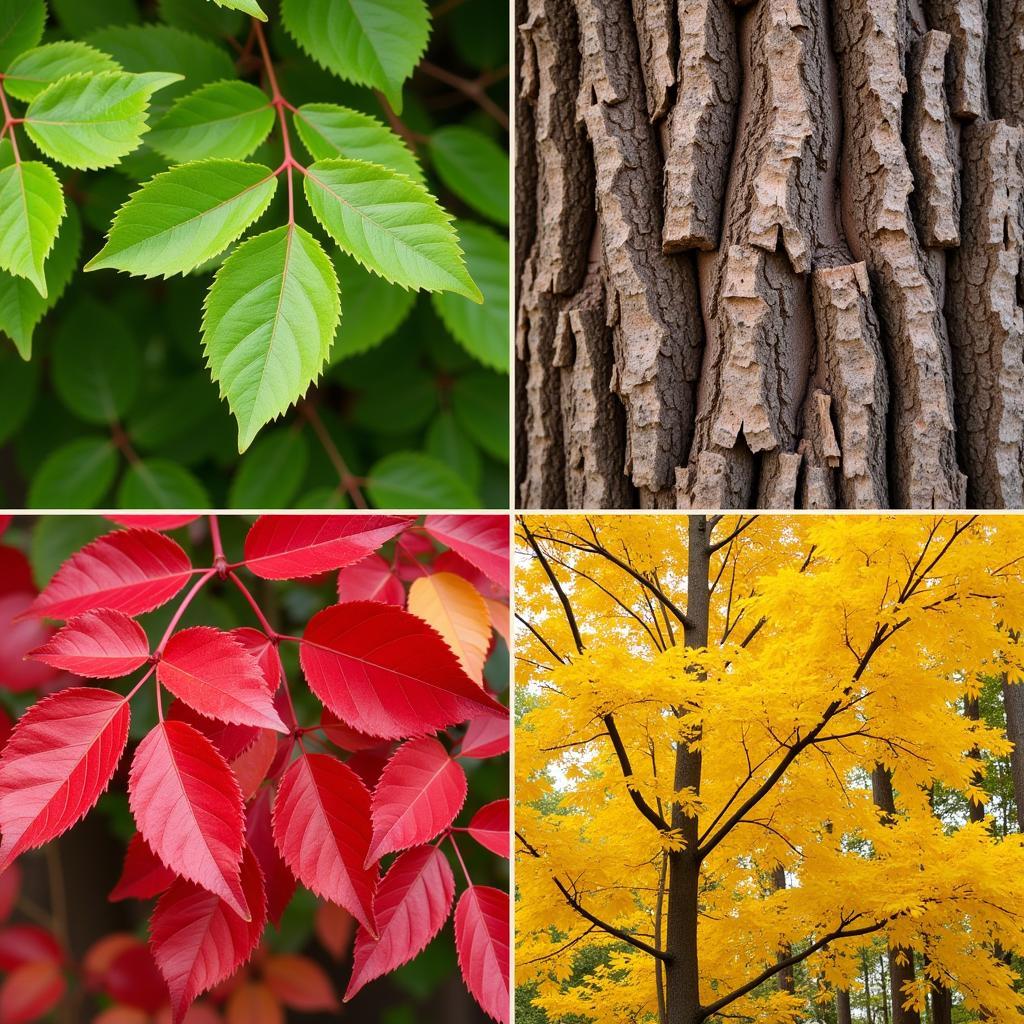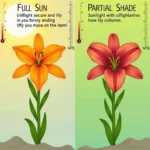Trees aren’t just brown and green. The world of tree color is remarkably diverse and surprisingly complex. From the vibrant yellows of aspen in the fall to the deep reds of redwood bark, the question “what color is a tree?” opens up a fascinating exploration of nature’s palette. Understanding tree color goes beyond simple aesthetics; it delves into the science of how trees function, adapt, and thrive.
Exploring the Spectrum of Tree Colors
The most common colors associated with trees are undoubtedly green and brown. The green comes from chlorophyll, the pigment essential for photosynthesis, the process by which trees convert sunlight into energy. Brown is typically associated with the bark, the tree’s protective outer layer. However, these are just the starting points.
Beyond Green and Brown: A World of Color
While green dominates the foliage, variations exist even within this single color. New growth can appear lighter, almost yellow-green, while mature leaves deepen into a richer, darker shade. Certain trees, like the blue spruce, even have a bluish tint to their needles, caused by a waxy coating. The variations in green are influenced by factors like the species of tree, the time of year, and even the amount of sunlight it receives. Similarly, bark color can range from the pale, almost white bark of the birch to the dark, almost black bark of certain walnut trees. You might find it interesting that some tree frogs change colors, much like the trees they inhabit. For more information, check out this resource: does tree frogs change colors.
 Tree Color Variations: Green, Brown, Red, and Yellow
Tree Color Variations: Green, Brown, Red, and Yellow
The Science of Tree Color: Pigments and Their Purpose
The colors we see in trees are the result of various pigments, each serving a specific purpose. Chlorophyll, responsible for the green, is central to photosynthesis. Carotenoids produce yellow, orange, and brown hues, while anthocyanins create vibrant reds and purples. These pigments work together in complex ways, influenced by factors like temperature, sunlight, and water availability.
Why Do Leaves Change Color in the Fall?
The spectacular fall foliage displays are a prime example of the dynamic nature of tree color. As daylight hours decrease and temperatures drop, chlorophyll production slows down, revealing the underlying yellows and oranges of the carotenoids. Anthocyanins, produced in the fall, add the brilliant reds and purples. This colorful transformation is not just a beautiful sight; it’s a part of the tree’s preparation for winter. If you’re interested in learning more about seasonal changes in trees, you might want to read about why trees change color early: why are the trees changing colors already.
The Role of Color in a Tree’s Life
Color plays a crucial role in a tree’s survival. The green of chlorophyll allows for energy production, while the colors of flowers attract pollinators. The changing colors of leaves in the fall are a part of the tree’s cycle of dormancy and renewal. Even the brown of the bark serves a purpose, protecting the tree from sun damage and insects. Colorado, for example, has a diverse range of tree species, each adapted to the local climate. You can discover more about Colorado’s state tree here: what is colorado's state tree.
How Do Different Tree Species Exhibit Unique Colors?
Different species have evolved unique color patterns, often adapted to their specific environments. Some trees, like the magnolia, have large, showy flowers that are often white or pink, attracting pollinators. Do magnolia trees thrive in Colorado? Find out more here: do magnolia trees grow in colorado. Other trees, like certain palms, maintain their green leaves year-round. Are there palm trees in Colorado? This article might answer your question: are there palm trees in colorado. The diversity of tree colors reflects the incredible adaptability of these remarkable organisms.
Conclusion
The question “what color is a tree?” is far more complex than it initially appears. Trees exhibit a wide range of colors, each with its own significance in the tree’s life cycle and adaptation to its environment. From the green of chlorophyll to the vibrant hues of autumn leaves, tree color is a testament to the beauty and complexity of nature.
Frequently Asked Questions
- What gives leaves their green color? Chlorophyll, the pigment essential for photosynthesis.
- Why do leaves change color in the fall? Decreased chlorophyll production reveals other pigments like carotenoids and anthocyanins.
- What is the purpose of the brown color of bark? Protection from sun damage and insects.
- Do all trees lose their leaves in the fall? No, evergreen trees retain their leaves year-round.
- What factors influence tree color? Species, time of year, sunlight, temperature, and water availability.
- How do tree colors contribute to their survival? Green for photosynthesis, flower colors for attracting pollinators, bark color for protection.
- Are there trees with unusual colors? Yes, some trees have blue, purple, or even reddish foliage due to specific pigments and adaptations.
Need help with your next painting project? Contact us at Color Box Hanoi! Call us at 0373298888, email us at [email protected], or visit our showroom at 86 Cau Giay, Hanoi. We have a 24/7 customer service team ready to assist you.

